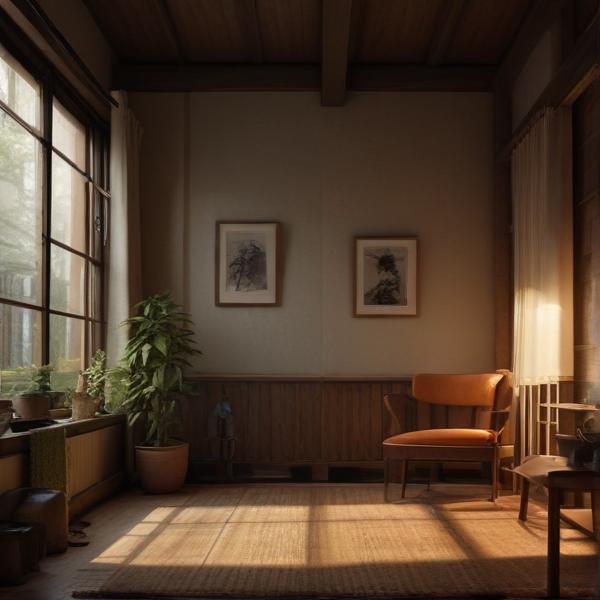基本信息 (Basic Information)
含义与用法 (Meanings & Usage)
中文核心释义 (Core Chinese Meaning): 居住,生活的地方,也有停留、位置的意思。
英文核心释义 (Core English Meaning): to live, to reside, residence, to be located
象形意义 / 为何这么写 (Pictographic Meaning / Writing Rationale)
文言文释义 (Classical Chinese Meaning)
与现代意义相近,表示停留、居住之意,有时也表示职位、地位。Similar to modern meaning; indicates residing, dwelling, or sometimes refers to a position or rank.
深入学习 (In-depth Study)
字源故事 (Origin Story)
字形演变 (Character Evolution)
常用词语和例句 (Common Words & Examples)
居住 (to dwell, to reside)
他长期居住在上海。
Eng: He has lived in Shanghai for a long time.
居家 (to stay at home; home life)
疫情期间,大家都需要居家隔离。
Eng: During the pandemic, everyone had to stay at home in quarantine.
家具 (furniture)
新房子的家具还没买全。
Eng: The furniture for the new house hasn't been fully purchased yet.
相关成语 (Related Idioms)
安居乐业
Meaning: to live and work in peace and contentment
多语言翻译 (核心释义) (Translations (Core Meaning))
- French: habiter, résidence
- German: wohnen, Wohnort
- Spanish: vivir, residencia
- Italian: abitare, residenza
- Portuguese: residir, residência
- Russian: жить, жилище
- Arabic: يعيش، إقامة
- Persian: زندگی کردن، محل سکونت
- Dutch: wonen, woonplaats
- Polish: mieszkać, miejsce zamieszkania
- Vietnamese: cư trú, nơi ở
- Ukrainian: жити, місце проживання
视频学习资源 (Video Learning Resources)
通过以下链接在热门视频网站搜索 "居" 的更多讲解:
Search for more explanations of "居" on popular video sites:
- 在 Bilibili.com 搜索 "居 字源 说文解字" (Search on Bilibili)
- 在 YouTube.com 搜索 "居 character origin etymology" (Search on YouTube)
网络参考 (Web References for "居") ()
网络内容摘要 (Web Content Summary):
居是一个常用汉字,核心含义是“居住、住在某处”或指“位置、所在”。 居 (jū) is a commonly used Chinese character. Its core meanings are "to reside, to live at a place," or "location, position."
-
象形起源:“居”是会意字,最初的字形表现为一个头戴虎皮冠的人坐在几(小桌)旁,体现了“停留、生活于某处”的意思。 Pictographic origin: "居" is an ideogram. The ancient script shows a person (with a tiger-skin crest) sitting beside a table, representing the act of staying or residing in a place.
-
常用词语:如“居住”(to reside), “居民”(resident), “居所”(residence)。 Common words: such as “居住” (to reside), “居民” (resident), “居所” (residence).
-
易混淆点:“居”与“处”在古文字中常常通用,如金文中“居”与“处”为同字,都有“居住”的意思。 Common confusion: In ancient scripts, "居" and "处" (chǔ) were often interchangeable, both meaning "to reside."
-
相关成语:如“安居乐业”(live and work in peace and contentment), 表示社会安定、生活安乐。 Related idiom: "安居乐业" (live and work in peace and contentment), which describes a peaceful and stable life.
部分参考资料内容待补充,仅包含字形演变与词语搭配,缺少更详细的文化故事。 Some referenced materials are incomplete, mainly providing character evolution and common usages, with limited cultural background details.
【居,琚】的甲骨文金文篆文字形演变含义 - 甲骨文研究网 甲骨文密码字典 在线甲骨文字典研究 - 甲骨文研究网 甲骨文密码字典 在线甲骨文字典 ...
汉字的来历和演变居:(說文解字 篆體字) (六書通 篆體字) (金文 ) 琚:(說文解字 篆體字)甲骨文密码【甲骨密码】琚:琚=居+王。 ... 日期:2023-03-19 来源 ... 汉字甲骨文破译字典》一书中,破解的古诗、竹简等古文作品收录在《新编甲骨文破译案例解析 ...
汉字"居"的起源与演变(源流)-汉字字源网
汉字字源网收录2975个汉字的源流词条,基本涵盖了常用汉字的字源分析,是学习和研究汉字的必备工具。 ... 【构造】会意字。居是由两个形体变来的。一个是凥,在金文里与"處(处)"是同一个字,皆为一个头戴虎皮冠的人据几而坐的形象。繁体发展为"處(处 ...
更多图片 (居 More Images) ()
